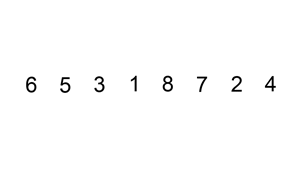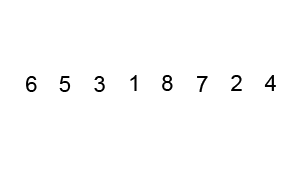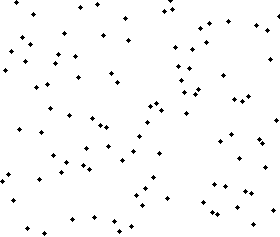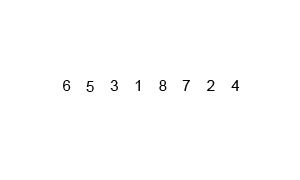- Simple recursive algorithms
- Backtracking algorithms
- Divide and conquer algorithms
- Dynamic programming algorithms
- Greedy algorithms
- Branch and Bound algorithms
- Randomized algorithms
This blog is an Ultimate Guide to Mastering Coding Interviews! Dive into the world of Data Structures, Algorithms, and Design Patterns with expert insights, practical tips, and in-depth tutorials. Whether you're a seasoned developer or just starting out, this blog is a go-to resource for acing technical interviews. Unlock the secrets to writing efficient code, optimizing algorithms, and applying design patterns to build robust solutions. Join us on this journey towards coding excellence!
Tuesday, June 29, 2010
Algorithm Types
Below are the list of categories into which various algorithm can be categorized:
Monday, June 28, 2010
ArrayList or LinkedList ...??
ArrayList or LinkedList ...?? compares ArrayList and LinkedList
Lecture Series on Design & Analysis of Algorithms
Computer Sc - Design & Analysis of Algorithms
Lecture Series on Design & Analysis of Algorithms by Prof.Abhiram Ranade, Department of Computer Science Engineering,IIT Bombay.
Lecture Series on Design & Analysis of Algorithms by Prof.Abhiram Ranade, Department of Computer Science Engineering,IIT Bombay.
Thursday, June 24, 2010
List of Algorithms
Algorithms are a sequence of steps for accomplishing a task. We use complex algorithms in our day to day tasks for eg. searching in Google, sending emails, booking air tickets etc.
 |
| an example on insertion sort (Photo credit: Wikipedia) |
Characteristics of algorithms
Performance (memory & CPU)
Simplicity
List of Algorithms
- Finding Maximum
- Order Statistics
- Matrix Multiplication
- Comparison
- Linear Search
 String searching algorithm (Photo credit: Wikipedia)
String searching algorithm (Photo credit: Wikipedia) - Binary Search
- Selection Sort
- Insertion Sort
- Bubble Sort
 English: an example on bubble sort. (Photo credit: Wikipedia)
English: an example on bubble sort. (Photo credit: Wikipedia) English: Sorting a random list using bubble sort (Photo credit: Wikipedia)
English: Sorting a random list using bubble sort (Photo credit: Wikipedia)
- Heap Sort
- Merge Sort
 English: Sorting a random list using merge sort. (Photo credit: Wikipedia)
English: Sorting a random list using merge sort. (Photo credit: Wikipedia) English: an example on merge sort. (Photo credit: Wikipedia)
English: an example on merge sort. (Photo credit: Wikipedia)- Radix or Bucket Sort
- Random algorithms - improves the worst case performance
- Quick Sort
- Finding Median
- Hashing
- Fibonacci sequence
- Spanning Tree
- Shortest Path - finding the shortest path from one point to another.
- Djikstra's algorithm
- String Searching
- String Matching
NP-complete or NP-hard problem has no known good optimal solution. If someone finds an efficient algorithm for one NP-hard problem, then that algorithm would be applicable to all NP-hard problems.
Related articles
 Big-O Misconceptions(ssp.impulsetrain.com)
Big-O Misconceptions(ssp.impulsetrain.com)
 Algorithm Headache(mayoiengineer.wordpress.com)
Algorithm Headache(mayoiengineer.wordpress.com)
 insertion sort vs bubble sort vs quicksort algorithm(stackoverflow.com)
insertion sort vs bubble sort vs quicksort algorithm(stackoverflow.com)
 What's really so bad about bubble sort?(nicknash.me)
What's really so bad about bubble sort?(nicknash.me)
 bubble sort help(daniweb.com)
bubble sort help(daniweb.com)
 Radix sort(daniweb.com)
Radix sort(daniweb.com)
 A simple C program for Insertion sort(depthgr8.wordpress.com)
A simple C program for Insertion sort(depthgr8.wordpress.com)
 How to teach Algorithms ?(kintali.wordpress.com)
How to teach Algorithms ?(kintali.wordpress.com)

Labels:
Algorithm,
BubbleSort,
Insertion sort,
MergeSort,
Quicksort,
Shortest path problem,
Sorting algorithm,
Topological sorting
List of Design Patterns
- singleton
- iterator / enumerator
- decorator
- facade
- listener
- publisher-subscriber
- factory
Factory Method pattern in LePUS3 (Photo credit: Wikipedia)
- abstract factory - A tutorial about abstract factory design pattern
The Abstract Factory pattern illustration, UML diagram. (Photo credit: Wikipedia)
Abstract Factory (Photo credit: Wikipedia)
- Model View Controller (MVC)
English: This diagram depicts how the Model View Controller Architecture works. (Photo credit: Wikipedia)
English: The model, view, and controller (MVC) pattern relative to the user. (Photo credit: Wikipedia)
Deutsch: Model View Controller (Photo credit: Wikipedia)
- Inversion of Control (IoC)
Related articles
Inversion of Control Containers and the Dependency Injection pattern(lchandara.wordpress.com)
Abstract Factory Design Pattern Explained(javacodegeeks.com)
IoC container solves a problem you might not have but it's a nice problem to have(devlicio.us)
Answer by jalf for Does Functional Programming Replace GoF Design Patterns?(stackoverflow.com)
Abstract factory pattern in java(howtodoinjava.com)
Factory Design Pattern(javabydesign.blogspot.com)
Design Best practices using Factory Method Pattern(javacodegeeks.com)
A Modern Alternative to Abstract Factory Filtered Dependencies(architects.dzone.com)
An explanation to Factory Design Pattern...!(daniweb.com)
Do These Design Patterns Stand the Test of Time?: Abstract Factory(architects.dzone.com)
Labels:
Abstract factory pattern,
Design Pattern,
Factory,
Factory method pattern,
Inversion of Control,
Languages,
Methodologies,
Programming
List of Data Structures
Below is the list of important data structures
- Simple Data Structures
- Primitive Data Types
- Boolean
- Numbers
- String
- Structures (structs)
- Points (x & y coordinates), Color (red, green, blue, alpha)
- Objects (Custom Data Types)
- Collections
- Arrays
- single -dimensional arrays
- multi-dimensional arrays
- two-dimensional arrays (rectangular),
- three-dimensional arrays,
- and so on...
- Jagged arrays (ex. daily sales per month )
- Lists
- ArrayList (resizable, dynamic or mutable arrays)
- Vector
- Operations
- Appending (Push) - adding an element at the end
- Insertion / Add - adding in the middle at a specified index
- Removing (Pop) - deleting an element at the end
- Deletion - removing an element at a specified index
- Splice - (adding and removing)
- Search / Find / Contains - searching for an item and returning location
- Sort - ordering the data
- Linked List
- Singly Linked List
- Definition: A data structure consisting of a group of nodes where each node is composed of data and a reference (or a link) to the next node in the sequence.
- Operations
- Insertion
- Deletion
- Find / Search
- Traversal
- Iterative
- Recursive
- Reversal
- Iterative
- Recursive
- Doubly Linked List
- Definition: A data structure consisting of a group of nodes where each node contains two fields, called links, that are references to the previous and to the next node in the sequence of nodes.
- The two node links allow traversal of the list in either direction. While adding or removing a node in a doubly linked list requires changing more links than the same operations on a singly linked list, the operations are simpler and potentially more efficient (for nodes other than first nodes) because there is no need to keep track of the previous node during traversal or no need to traverse the list to find the previous node, so that its link can be modified.
- Operations
- Insertion
- Deletion
- Traversal
- Reverse Traversal
- Circular Linked List
- Abstract Data Type
- Queue - First In, First Out
- Examples - Job Queue
- Operations
- Enqueue - adding an element at Last
- Dequeue - removing an element from Front
- Stack - Last In, First Out
- Operations
- Push
- Pop
- Peek
- Priority Queue
- Double-ended Queue (Deque) - supports adding deletion from both ends
- Hash-Based Data Structures
 |
hash table illustration, with three keys, funcbox, sparse range, no collisions, only the values stored. Inspired on File: HASHTB32.svg and other similar images. Created with make-hash-table-figure -nkeys 3 -funcbox 1 -sparse 1 -keys 0 -values 1 -collisions 0 -links 0 -overflow SP (Photo credit: Wikipedia)  hash table illustration, with three keys, sparse range, buckets are links, collisions resolved by separate chaining, keys and values stored. Inspired on File: HASHTB32.svg and other similar images. Created with make-hash-table-figure -nkeys 5 -funcbox 0 -sparse 1 -keys 1 -values 1 -collisions 1 -links 1 -overflow LL (Photo credit: Wikipedia) |
- Associative Arrays
- Invariants
- Unique Keys
- Operations
- Add
- Remove
- Hash Tables / Hash Map / Dictionaries
- create with an initial capacity
- Hash Collision
- separate chaining
- Set / HashSet
- unordered collection of objects
- No sequence
- No duplicates
- Fast lookup - for checking membership, not retrieval
- Operations
- add
- remove
- contains
- Tree
- Binary Tree
 A simple binary tree of size 9 and height 3, with a root node whose value is 2. The above tree is unbalanced and not sorted. (Photo credit: Wikipedia) |
- Binary Search Tree
- invariants
- no duplicates
- operations
- add
- delete
- find
- traverse
- pre-order
- in-order
- post-order
- Self Balancing Trees
- AVL Tree
- Red-Black Tree - (implementation of TreeMap in Java uses this)
- Scapegoat Trees
- Splay Trees
- Segment Tree (for min/max/sum range queries)
- Fenwick Tree (Binary Indexed Tree)
- Heap (Min Heap or Max Heap)
 | |
|
Related articles
 Singly Linked List class using Collection hierarchy C++(stackoverflow.com)
Singly Linked List class using Collection hierarchy C++(stackoverflow.com)
 Five Myths about Hash Tables(hughewilliams.com)
Five Myths about Hash Tables(hughewilliams.com)
 Open Data Structures: an open content textbook(opendatastructures.org)
Open Data Structures: an open content textbook(opendatastructures.org)
 Implementing a binary tree using linear linked lists(en.nerdaholyc.com)
Implementing a binary tree using linear linked lists(en.nerdaholyc.com)

Labels:
Data structure,
Hash table,
Java,
Linked list,
PriorityQueue,
Trees
Subscribe to:
Posts (Atom)